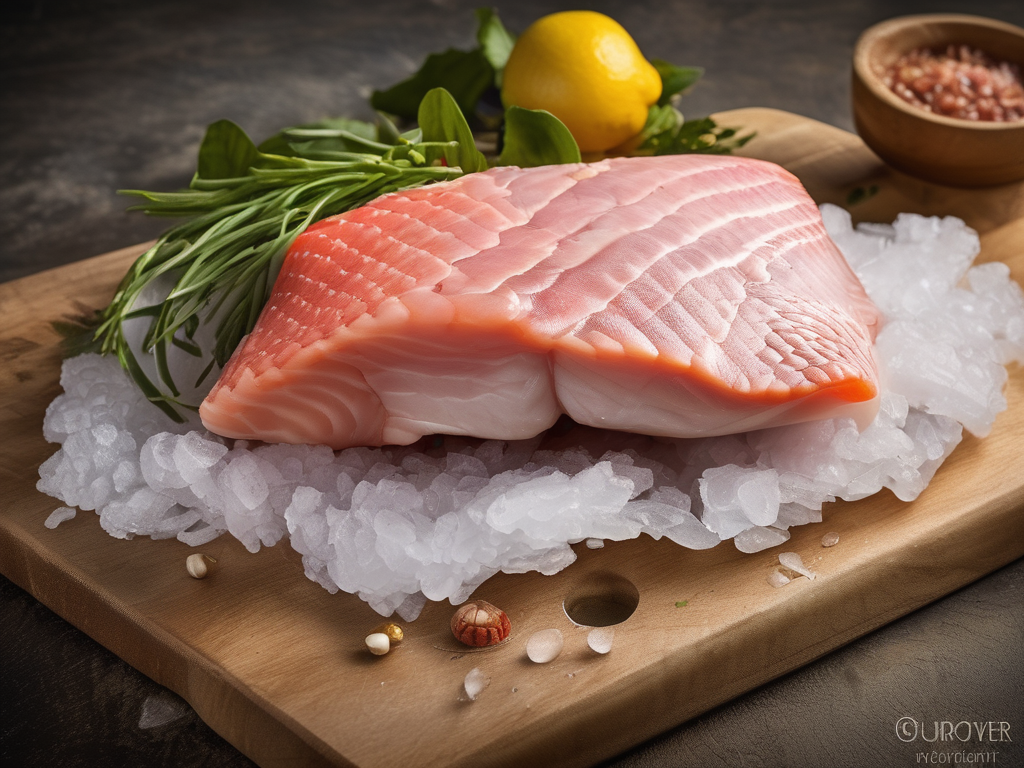
Is Your Grouper Purchased Commercially Frozen Raw Still Safe to Eat?
Get Your Free Food Safety Cheat Sheet
30 most common foods with instant answers. Print it and stick it on your fridge—completely free!
Is Your Grouper Purchased Commercially Frozen Raw Still Safe to Eat?
When it comes to enjoying seafood like grouper, ensuring its freshness and safety is crucial. Purchasing commercially frozen raw grouper is a convenient way to enjoy this delicious fish, but how can you tell if it's still good to eat? In this guide, we will explore practical tips and safety information to help you determine the quality of your commercially frozen raw grouper. (Grouper purchased commercially frozen raw)
Understanding the Shelf Life of Frozen Grouper
Frozen grouper can have a long shelf life if stored properly. Here are some key points to keep in mind:
Freezing Process
- Commercially frozen raw grouper is typically frozen shortly after being caught to preserve its freshness.
- Proper freezing helps maintain the quality of the fish and prevents the growth of harmful bacteria.
Recommended Storage Time
- For optimal quality, it is recommended to consume frozen grouper within 3-6 months of purchase.
- Over time, frozen grouper may lose some of its texture and flavor, so it's best to use it within the recommended timeframe.
Signs of Freezer Burn
- Freezer burn can occur when the fish is not properly sealed or if it has been stored for an extended period.
- Look for any signs of discoloration, dry spots, or ice crystals on the surface of the fish, which may indicate freezer burn.
How to Determine If Your Frozen Grouper Is Still Fresh
To ensure the safety and quality of your commercially frozen raw grouper, here are some practical tips to help you assess its freshness:
Visual Inspection
- Check the appearance of the fish. It should have a consistent color and texture without any discoloration or off-smelling areas.
- Look for any signs of freezer burn, such as white spots or dry patches on the surface of the fish.
Smell Test
- Fresh grouper should have a mild, briny smell reminiscent of the ocean.
- If the fish smells overly fishy, sour, or ammonia-like, it may be an indication that it has spoiled.
Texture Check
- Grouper should have a firm and slightly translucent texture when raw.
- Avoid fish that feels mushy or slimy, as these are signs of spoilage.
Thawing Process
- Properly thaw the frozen grouper in the refrigerator to maintain its quality.
- Avoid thawing fish at room temperature, as this can promote bacterial growth.
Cooking Considerations
- If you are unsure about the freshness of the grouper, cooking it thoroughly can help kill any potential bacteria.
- Ensure the fish reaches an internal temperature of 145°F (63°C) to ensure it is safe to eat.
Safe Handling and Storage Practices
To keep your commercially frozen raw grouper safe to eat, follow these essential handling and storage practices:
Proper Storage
- Store frozen grouper in the coldest part of your freezer at 0°F (-18°C) or below.
- Make sure the fish is tightly sealed in a freezer-safe bag or container to prevent freezer burn.
Thawing Techniques
- Thaw grouper in the refrigerator overnight or under cold running water for faster thawing.
- Avoid thawing fish on the counter, as this can lead to bacterial growth.
Cross-Contamination Prevention
- Keep raw grouper separate from other foods to prevent cross-contamination.
- Clean and sanitize cutting boards, utensils, and countertops after handling raw fish.
Use-By Dates
- Pay attention to the expiration date on the packaging and consume the fish before it expires.
- When in doubt, trust your senses and err on the side of caution.
Conclusion
Enjoying commercially frozen raw grouper can be a delicious and convenient option, but it's essential to ensure its freshness and safety before consumption. By following the tips outlined in this guide, you can confidently assess the quality of your frozen grouper and enjoy it in your favorite dishes without compromising taste or safety. Remember to always prioritize proper handling, storage, and cooking practices to savor the best flavors of this popular seafood choice.
Authoritative Food Safety References
These agencies and university labs inform every tip and health precaution we publish.
USDA FoodKeeper – Cold Storage Guidelines
Official refrigerator, freezer, and pantry timelines maintained by the U.S. Department of Agriculture.
Visit USDA FoodKeeperFDA Produce Safety Rule & Grower Guidance
Field-to-fridge handling practices that prevent contamination of fruits, vegetables, and leafy greens.
Visit FDA Produce SafetyCDC Foodborne Illness Prevention Hub
Surveillance-backed guidance on pathogens, symptoms, and steps to reduce foodborne illness risk.
Visit CDC Food SafetyUC Davis Postharvest Technology Center
University research detailing optimal storage atmospheres for produce after harvest.
Visit UC Davis PostharvestPenn State Extension – Home Food Preservation & Safety
Peer-reviewed extension bulletins on safe canning, chilling, and reheating practices.
Visit Penn State ExtensionGet Your Free Food Safety Cheat Sheet
30 most common foods with instant answers. Print it and stick it on your fridge—completely free! Want more? Upgrade to the complete guide with 70+ foods.
Scan your food directly and get instant safety info using our AI-powered camera feature.